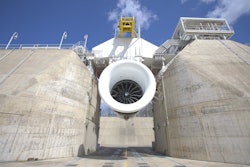TERRE HAUTE, Ind. (AP) — The "last of the Mohicans" is the nickname Eric Swartz has for a pile of misshapen, bloated bricks heaped at the Colonial Brick Corp. in Cayuga.
Correctly named Mohawk Clinkers, the chunky, multi-hued bricks are intentionally created by overheating a kiln at the brick factory, and they have traditionally been a top seller because of the interesting texture they give in construction.
But this pile, along with several skids already stacked and wrapped for sale, are the last of their kind to come out of the kilns, first built around 1904 on the southern edge of the Vermillion County town.
Production of all bricks at Colonial ended last fall, as owner Dan Swartz, Eric's father, decided to close and place the business for sale after more than 50 years of ownership.
"The reason why we were still doing it is because we're stubborn," Swartz said. "We did well until about 1988. We'd made a profit every year."
But as the economy declined, and the housing construction market slumped, Swartz had to cut his workforce in half. He stayed afloat making half the product. The last seven years, however, the brick plant has operated at a loss, prompting Swartz to make the tough decision to sell.
He hopes a buyer will come up with the $750,000 asking price to take over the plant. If not, the 50-acre site can be sold for another use.
Or, as Eric points out, the site will make a great living history tourism destination if some investor wants to preserve and invest in the brick plant. But he admits, that's a big if.
"We've had a good run," Eric said on a recent sunny day following a tour of the now dormant kilns. "We've been a good employer for a lot of people here in Cayuga."
His father Dan bought the site in 1965.
As a young man who had worked for about nine years at the Arketex plant in Brazil, Dan said, he thought he knew something about making bricks. At the time he bought the Colonial plant, about 40 men were employed in the daily manufacturing process of 26 tons of bricks made five days a week.
Some years they would produce 12 million bricks.
But compared to modern brick makers, which produce about 140 million bricks per year, Colonial could not always keep up.
Dan Swartz said he has remained friends with modern brick making businesses — often supplementing their production with special orders that only a traditional brick plant like Colonial could provide. And he admits that price-wise, he could not compete.
He sold Colonial bricks at about $315 per thousand, while competitors sold at about $220 per thousand, he said.
"About all we can do now is dismantle it and sell the land to someone who can use it," Dan said.
The acreage behind the kilns contains a deposit of shale and clay that is mined to make the bricks. He estimated that about eight to nine years worth of shale and clay remain to be mined.
But it is unlikely that a new owner would make the investment needed to modernize the plans.
The kilns are still fired using coal, as they have been from the start when men shoveled the fuel into the multiple "eyes" around the exterior of the beehive- shaped kilns to bring the temperature up to 1,950 degrees, where they were held for 48 hours to allow the heat to penetrate the bricks. The kilns would cool about four days, and the bricks would then be removed, sorted and packaged for shipment.
Dan Swartz said he never converted to the modern fuel of natural gas because it's not available in Cayuga. He purchased coal with a low-sulfur content from a mine in the Dugger area, and fought with the state environmental regulators about the exhaust from the kilns.
"I feel most people are afraid to take on that situation," Swartz said of the environmental regulations. "We couldn't afford to get into compliance."
When first built as the Acme Brick company, power came from a huge steam engine that operated the grinders and extrusion of the product into a long moist brick material that was cut and stacked onto skids and transported to the kilns.
Electricity has powered the plant for many years, but the other processes have remained essentially the same.
Eric Swartz said that the kilns themselves are actually torn down in turn every 20 to 30 years and rebuilt. The bricks themselves become brittle and crumble from all the firings. The dome-shaped roofs are engineering masterpieces of bricks themselves. Some of them have been covered by metal domes from old grain bins in an effort to preserve the domes for a few years longer. Eric said that was an experiment of his father, who had a knack for engineering solutions that cropped up through the years.
Many buildings and houses throughout the Wabash Valley contain Colonial Brick products, Dan Swartz said. In Terre Haute, he named a few buildings on Wabash Avenue that are comprised mostly of the Cayuga-made bricks.
Even the Indianapolis Motor Speedway — originally constructed of bricks and nicknamed "The Brickyard" — likely included some bricks made in Cayuga. Swartz said he didn't have actually documentation of that, but he's been told that bricks from plants all over the state were used for the original race track.
Indiana Landmarks Foundation reports that at one time, the Wabash Valley was home to 15 brick and clay tile factories. And Indiana Landmarks is also interested in the future of the brick plant. It is promoting the sale of the property on its website.
Eric Swartz said the business is now handled by seven employees, mostly tasked with filling orders for bricks until the last of the inventory is sold, hopefully this summer.
"I miss firing these," Eric said with his hand on a kiln wall. "But I don't miss the seven-days-a-week telephone."
___
Source: (Terre Haute) Tribune-Star, http://bit.ly/20VEF9g
___
Information from: Tribune-Star, https://www.tribstar.com/






















